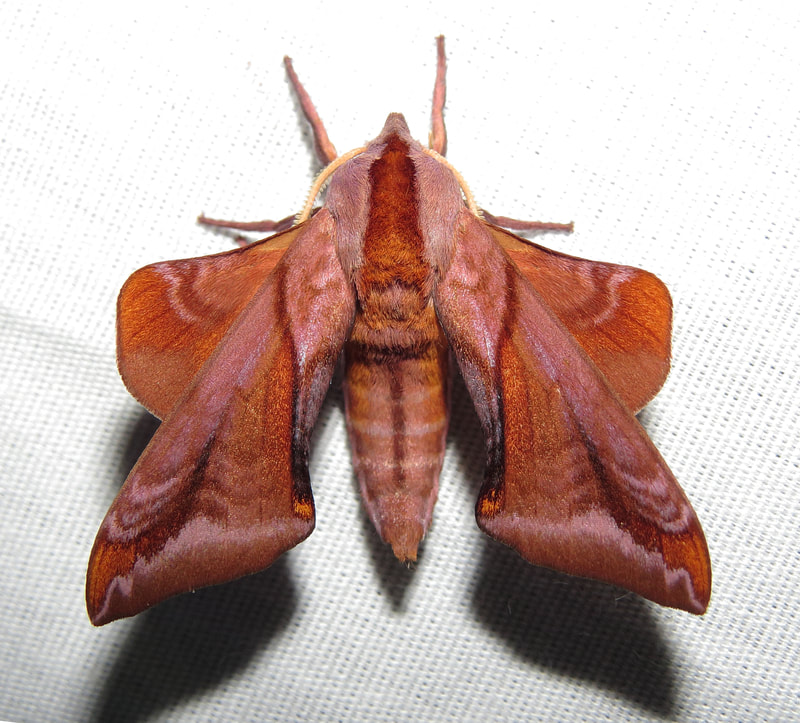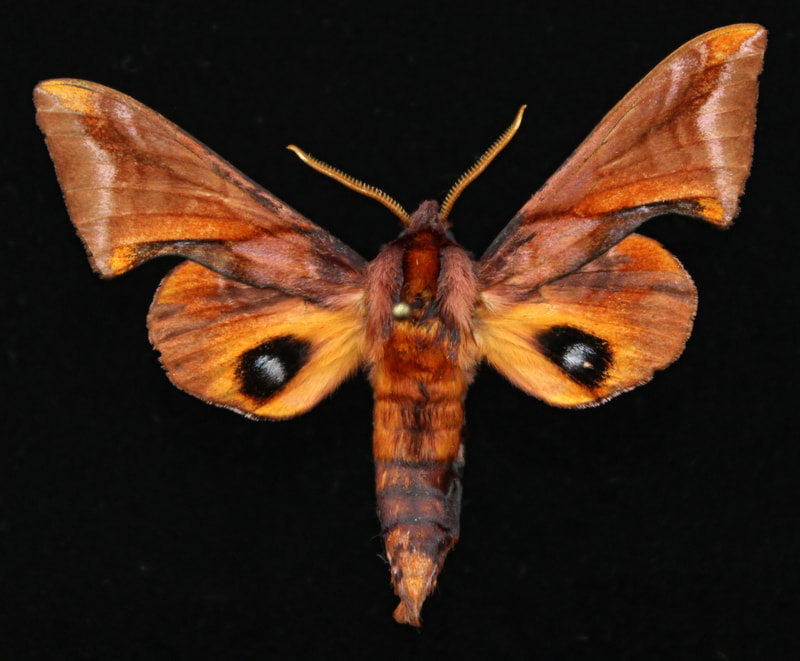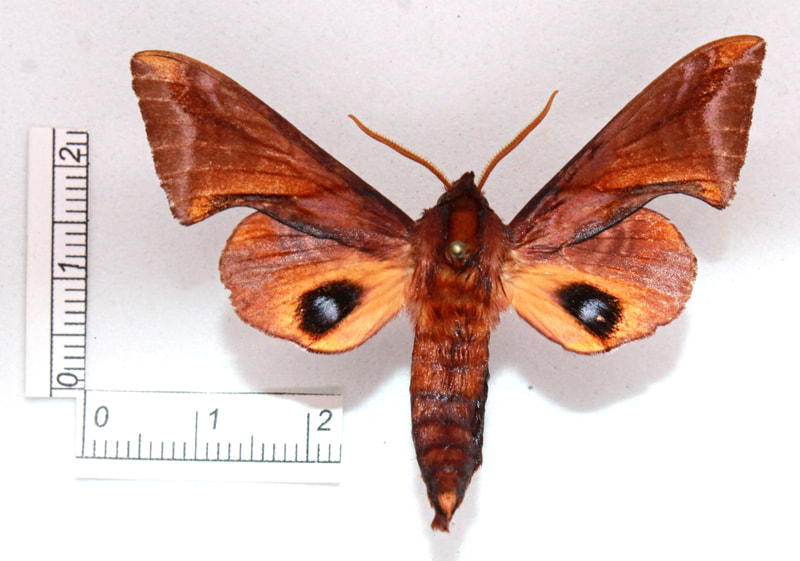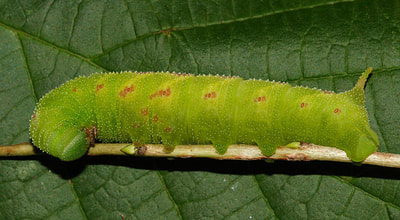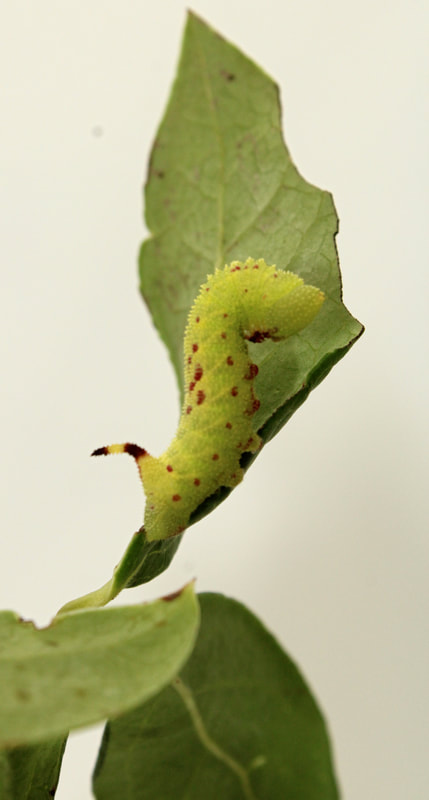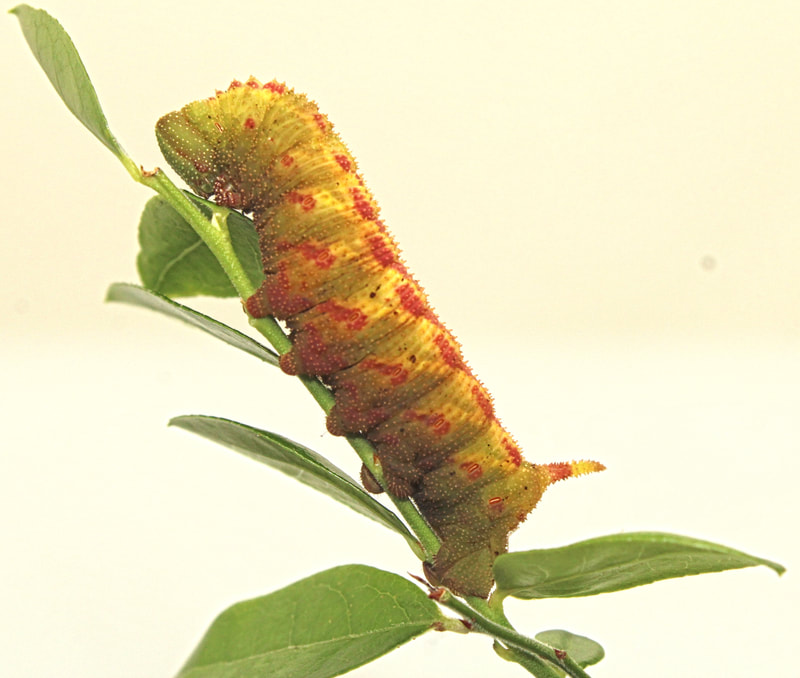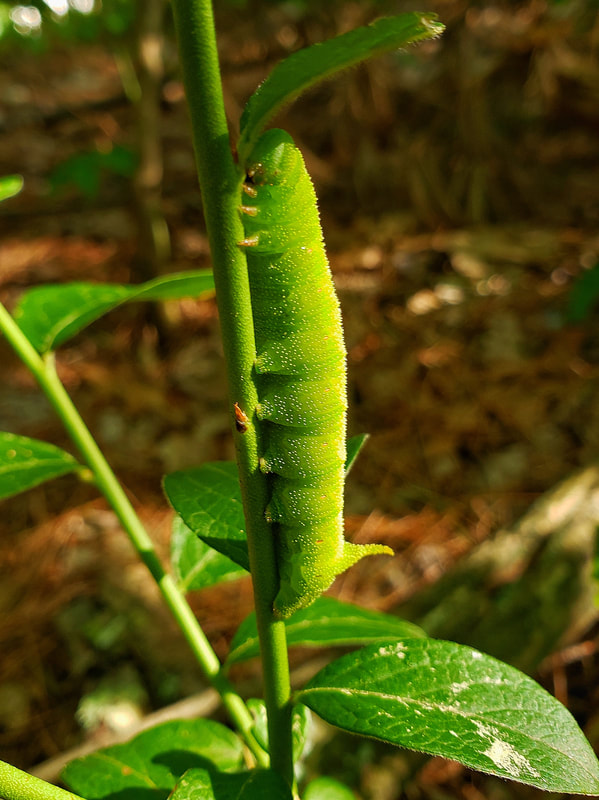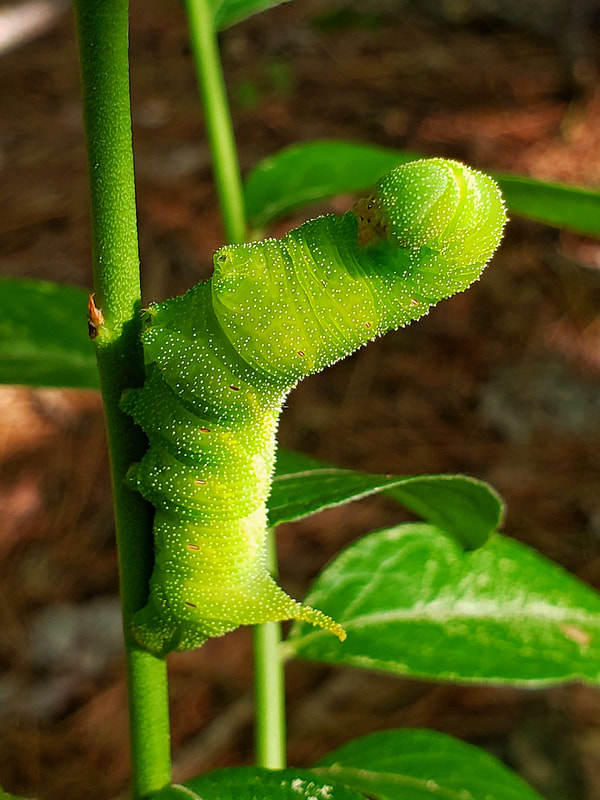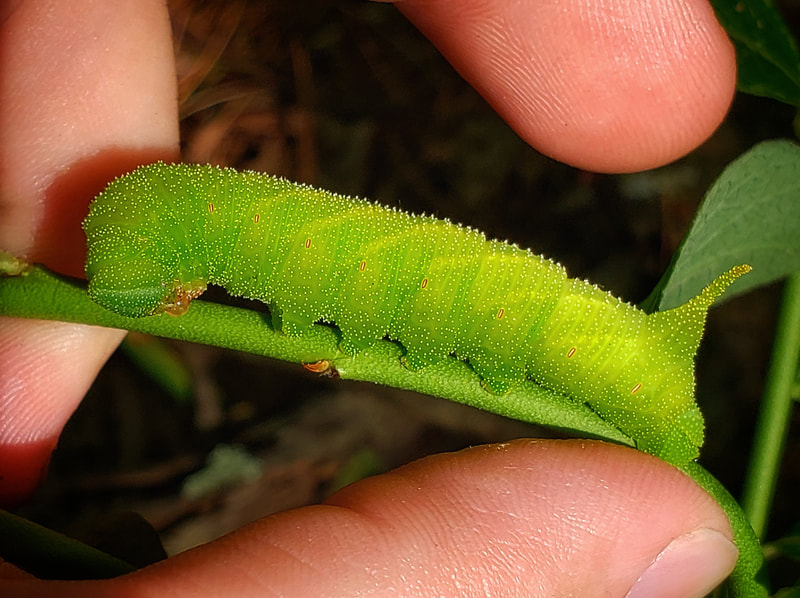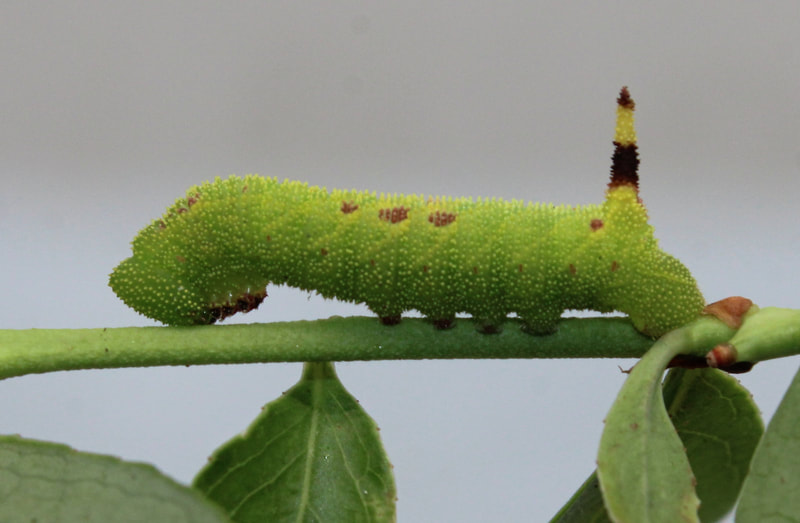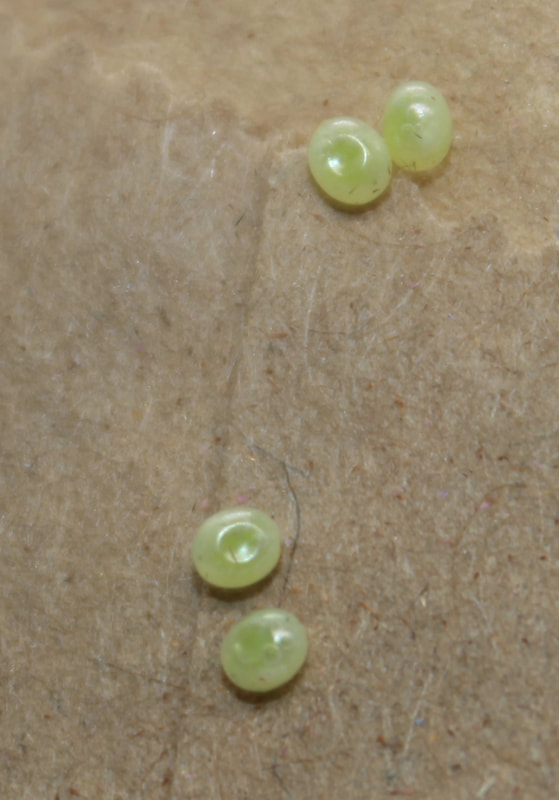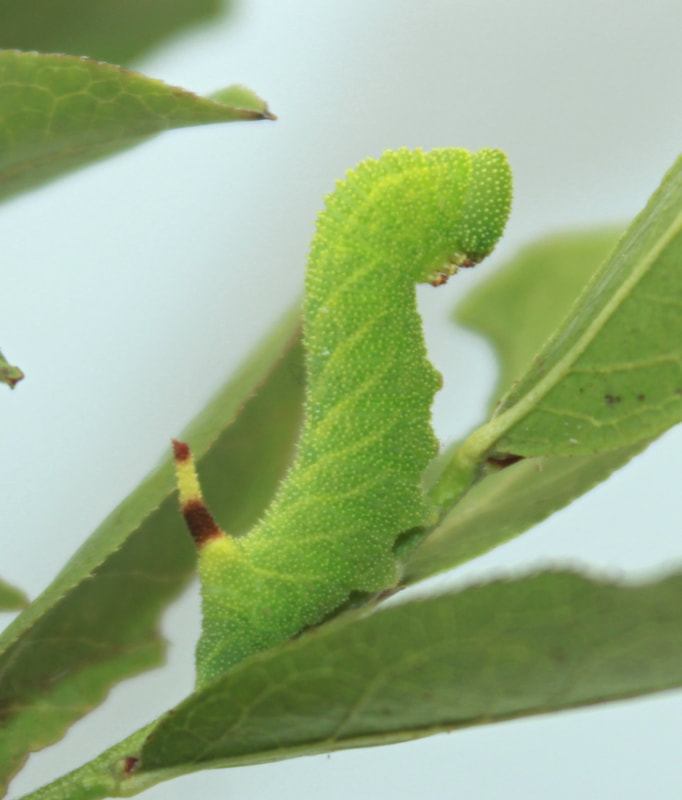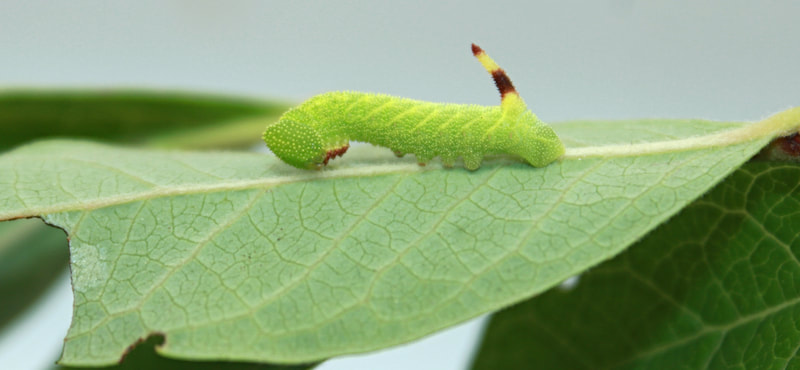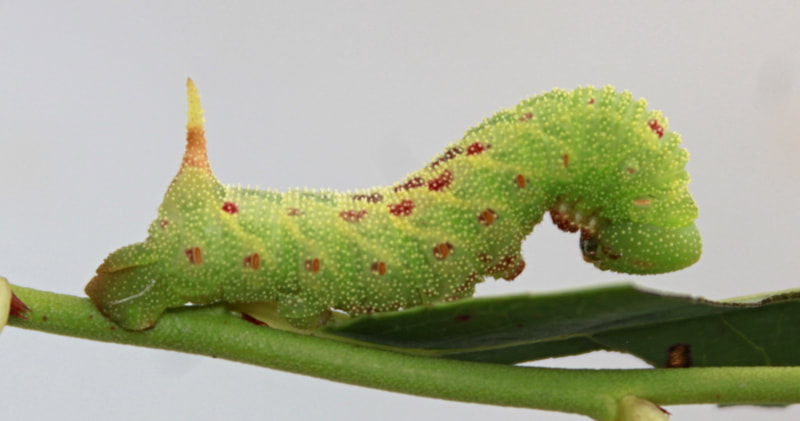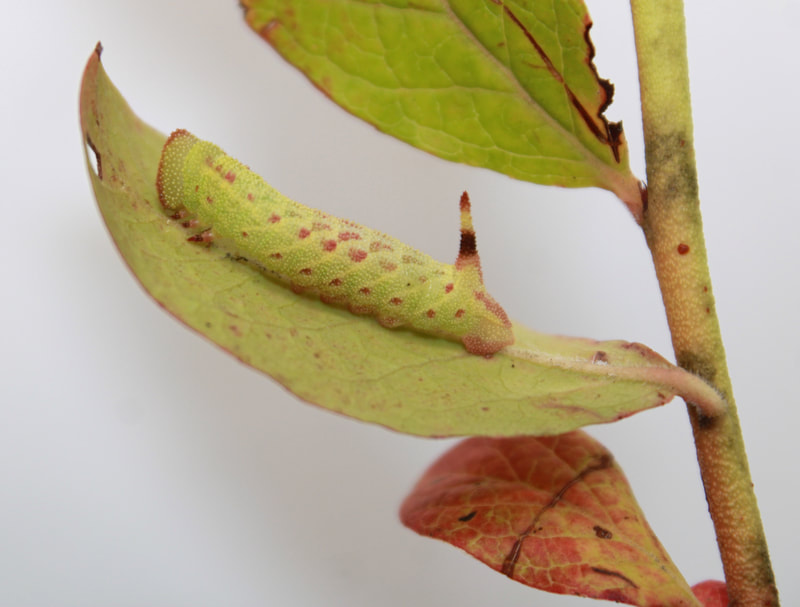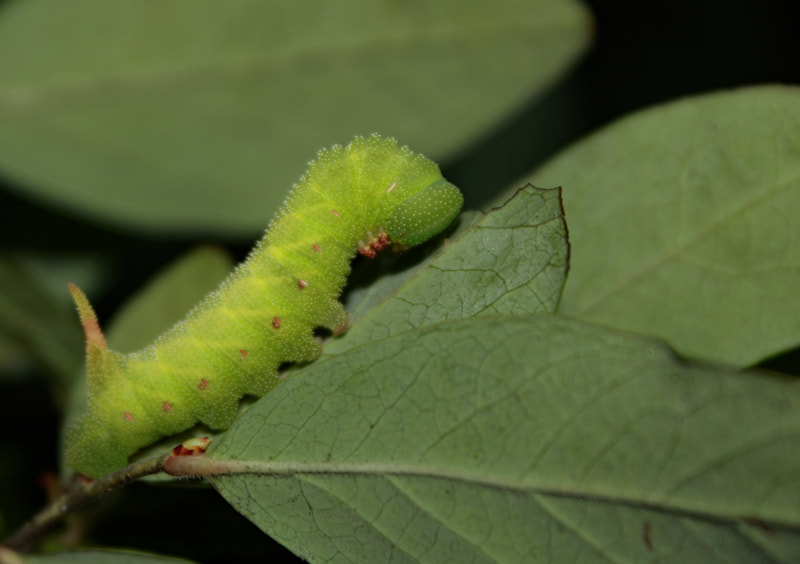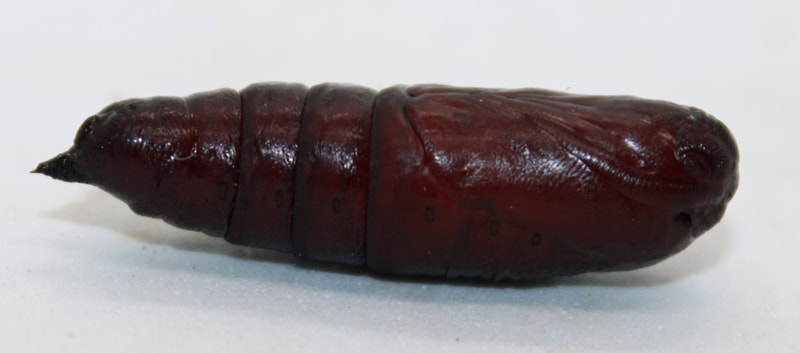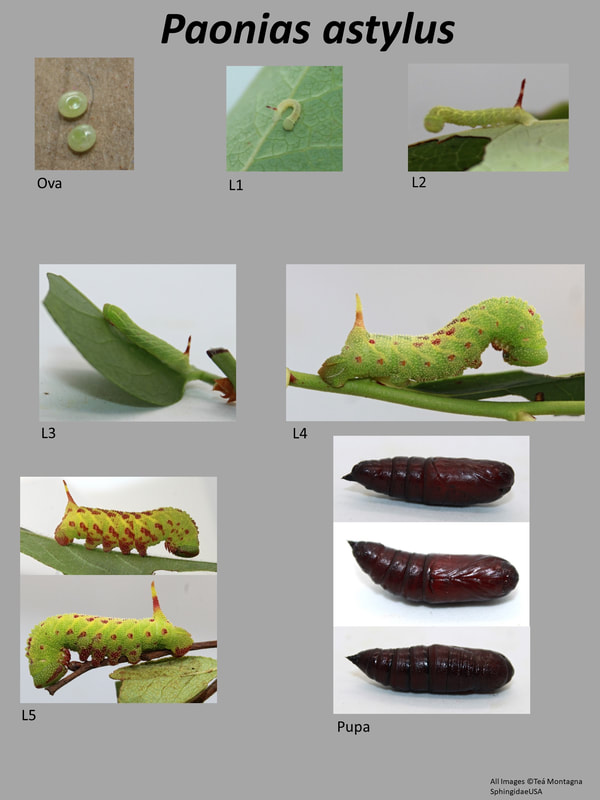|
Common names: Huckleberry Sphinx
Ecology and Life History Overview: This moth flies from May to July in the Northeast, and through September in Florida. There are one or two broods in the Northeast, and 2 or 3 broods further south. This moth is heavily associated with Vaccinium spp. They can be found in wetlands, marshes, pine barrens, and other habitats with lots of their host. The adults do not feed, but are readily attracted to light. They tend to fly later at night, usually between 0000 and 0330 (1). Adults lay eggs on their hostplant, presumably laying eggs on the underside of leaves. The larva, presumably rest on the plants during the day, feeding at night. As the larva grows, it develops a bicolored horn and some purple and red maculation, possibly allowing the now larger larva to better blend in. Searching for Larvae and Rearing Notes: The larvae I have recovered have all been along the edge of a field in large Vaccinium corymbosum plants (1). The field is bordered by wetlands and small ponds. Interestingly, I have not recovered larvae in Pine Barrens habitat, despite the moth being far more common there (1). It’s possible they are utilizing more Vaccinium angustifolia which is much more widespread there (1). The caterpillars are also easy to find using UV flashlights as they floresce brightly (1). 4th and 5th instar larvae readily accepted assorted Vaccinium and seemed to have no problem in captivity, but all wild collected larvae were parasitized (1). Adult Description: This moth has a 30-41mm forewing length (2). The forewings of this moth are totally smooth and lack any scallops or lobes. The ground color of the wings is distinctly orange, instantly separating it out from the other members of this genus. The hindwings are orange with a yellow circle that begins at the anal angle and encloses the bottom portion of the wing. Inside that area there is a blue fake eyespot enclosed in black. The way this moth sits is unique to the subfamily, and will help you narrow down your identification. If the hindwings are pulled up and are viewable from above the forewings, it’s likely a Smerinthinae. Larval Description: L4: The larva is a translucent green color with small granules, and some red splotching on the dorsal region. The horn of the larva is distinctly bicolored, usually brown/red and yellow. There may be some light yellow abdominal streaking. At this stage, you can separate this larva out from most other species. L5: The ground color of the larva is light, almost lime green. The larva appears fairly granulose, and the horn which sticks straight up, is still distinctly bicolored. The amount of red and purple splotching varies from individual to individual, but is almost always present. Some final instar larvae may be overall “brighter” in color and seem more vivid, while others may appear more subdued. This seems to be indicative of how long the larva has been in the final instar, with the larva becoming duller as it approaches pupation. |
Hostplants:
Click here to load this Caspio Cloud Database
Cloud Database by Caspio |
The gallery to the left contains photos of Paonias astylus adults. If you have a photo that you would like to submit to us, please contact us.
The gallery to the right contains photos of Paonias astylus larval and pupal stages. If you have a photo that you would like to submit to us, please contact us.
The gallery to the right contains photos of Paonias astylus larval and pupal stages. If you have a photo that you would like to submit to us, please contact us.
|
|






